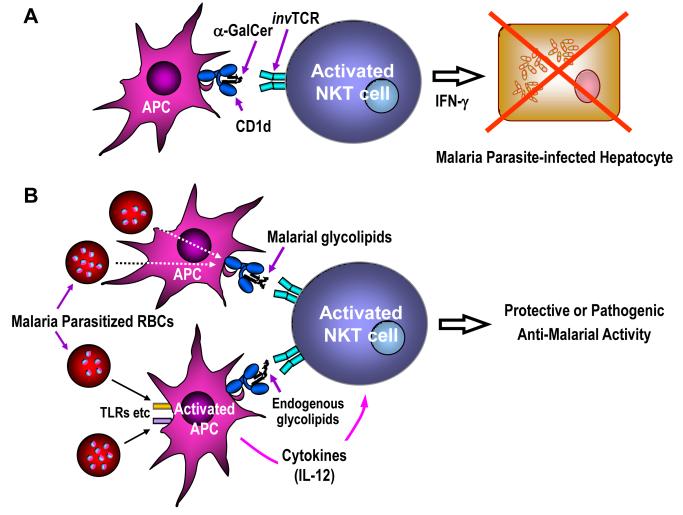Figure 1.
Interaction between NKT cells and malaria parasites. A: NKT cells activated by a CD1d-binding glycolipid, α-GalCer, can exhibit inhibitory activity against the development of the liver stages of malaria, which is mediated by IFN-γ. B: NKT cells may get activated directly by plasmodial glycolipids/phospholipids that bind CD1d. Alternatively, plasmodial lipids may cause up-regulation of CD1d-binding endogenous glycolipids by stimulating antigen presenting cells (APCs) through toll-like receptors (TLRs) and other receptors. The endogenous glycolipids together with IL-12 secreted by stimulated APCs may, in turn, induce activation of NKT cells. Upon activation, NKT cells may exhibit protective or pathogenic anti-malarial activity.

